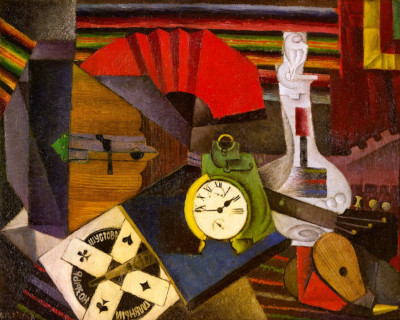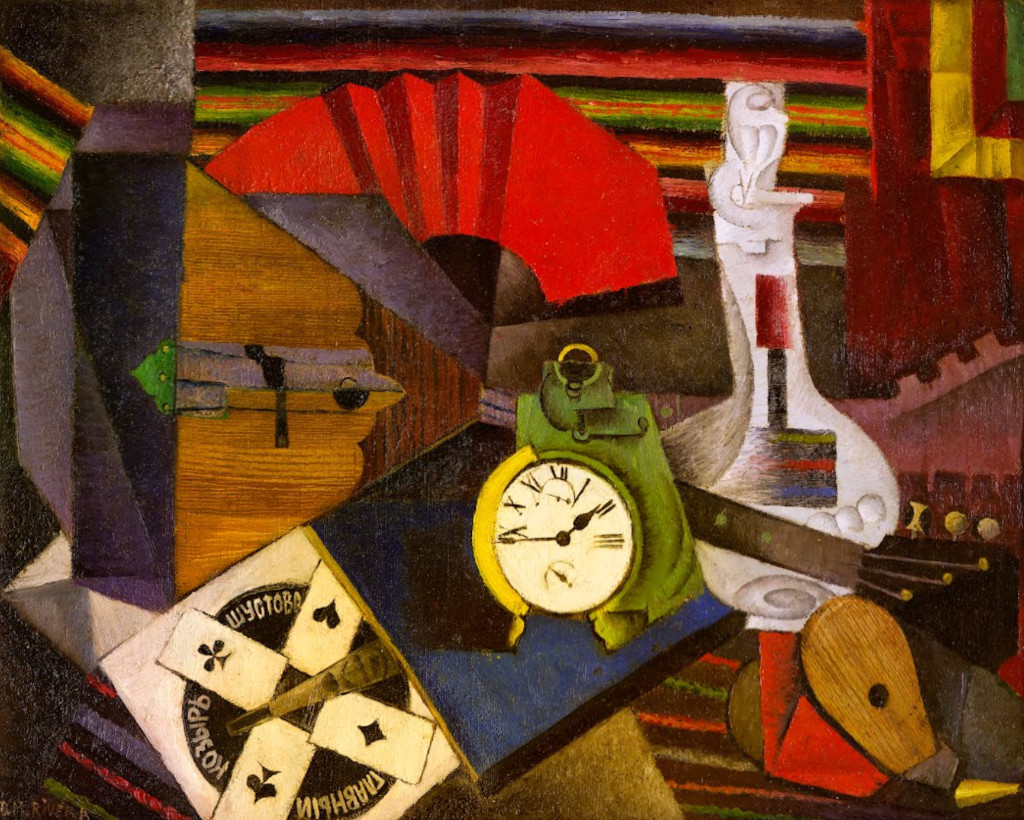The Alarm Clock is a delightful Cubist artwork by Diego Rivera which displays very clearly the influence on his career made by European art. He lived in the continent during the 1910s and spent a lot of time in the company of other famous names from that period.
There is a wealth of detail within this painting from 1914, far besides just the Alarm Clock which sits centrally. This item is brightened with tones of yellow and green, with its angles being adapted by the artist in the common manner of Cubist art. Some elements in the painting are entirely flattened, whilst others are shown from different angles together at the same time. Arrangements such as this, often upon table tops, had been used by European Cubist painters many times and Rivera follows that approach here. We also find a Russian card game displayed towards the left hand side, as signified by the lettering added by Rivera. We can spot the standard symbols of playing cards, and a blue book overlaps that game. There is also part of a guitar which strikes across the horizontal towards the right hand side. Musical instruments were also regularly seen within Cubist compositions such as this.
It is a little harder to decipher the patterned elements in the background, which could be wallpaper designs or even hanging material. There also appears to be some sort of lock, for a door or window. The Cubist artists would all amend reality, but varied the levels to which they departed the original forms and angles. When viewed up close, this painting actually hosts an incredible number of textures and colours across the busy composition. Rivera loved Cubism and devoted several years to it before then moving on again once more. By the end of his career he would count many different genres across his oeuvre, underlining his curiosity as well as the ability that he had to successfully deliver all manner of different techniques and styles. The Alarm Clock was completed when he was in his late twenties and still moving around Europe in search of new ideas.
The Alarm Clock one of several Diego Rivera paintings to be found at the Museo Frida Kahlo, which is based within her former house. The lives of these two individuals were incredibly interlinked and Diego suffered deep trauma when Frida died. Despite their repeated problems, there can be no doubt as to the love both held for each other which lasted for many decades, even during their divorce. It is therefore entirely fitting that so much of their work appears together in a variety of high profile collections all across Mexico, though most commonly within national institutions based in the capital city. Their reputations now enjoy international status and both are held in high regard by academics all around the world.





